You’re heading into that home stretch of pregnancy — just over a month left! It’s a great feeling to know that you’re almost there and will soon get to meet your baby. However, this is one of the busiest times of your pregnancy, as you’re realizing that life is changing and SOON — week by week or day by day! So, let’s talk about a few things you should keep on your priority list.
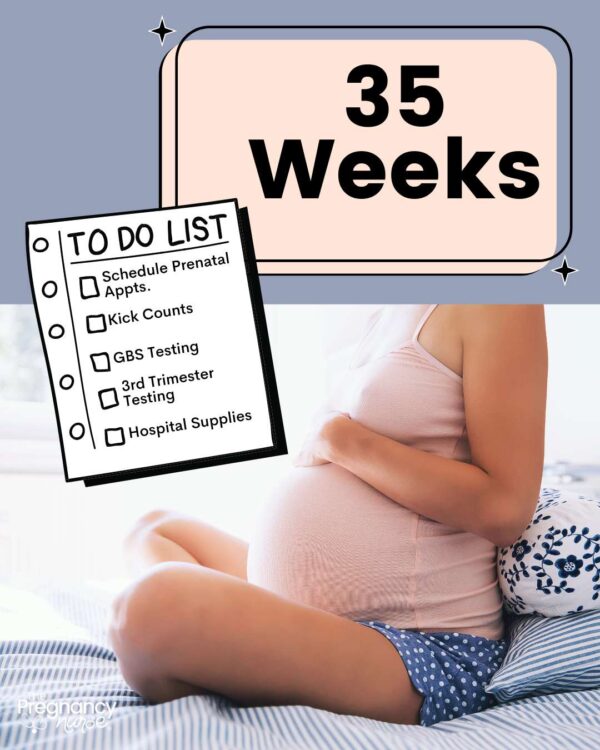
While you’re here, grab my third trimester checklist — it gives you a few checklists I think you’ll find super handy:
I LOVE a to-do list or pregnancy goals, so I hope you guys find this helpful:
Schedule-Out Prenatal Appointments
Get those prenatal visits scheduled out. When you’re planning in advance you can get the time that works best for you (or perhaps a time when the doctor is most on schedule — I found that right after lunch or first thing in the morning was a good spot).
You HAVE to make prenatal appointments a priority. I know, I know that a lot of prenatal appointments feel like a 100% waste of time for much of pregnancy, but they’re going to be quite frequent now — because things can change day to day in pregnancy.
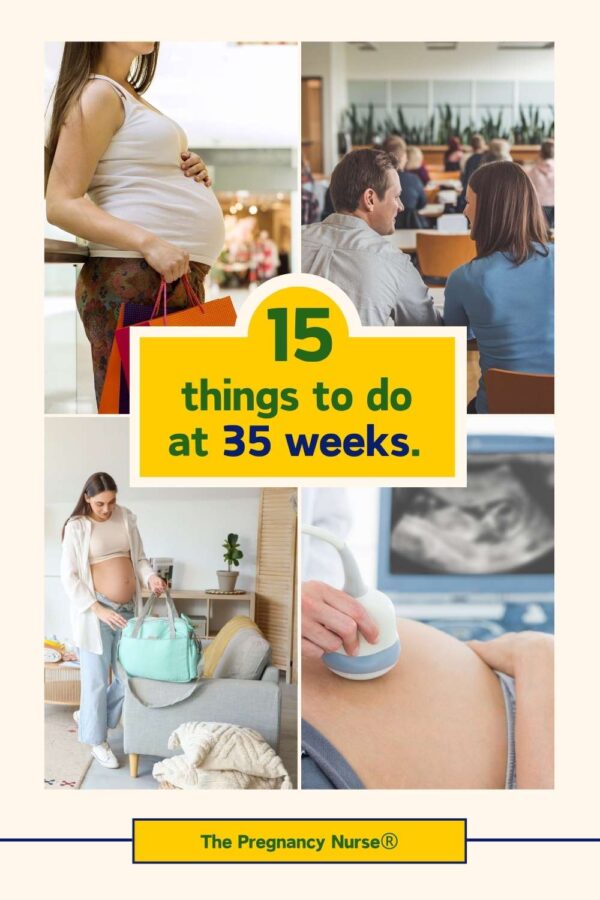
Keep Doing Kick Counts
You should’ve started kick counts as you entered your 3rd trimester.
Did you know that they have been proven to save 1/4 stillbirths when done correctly?
Unfortunately, a lot of providers don’t really explain them right (it is NOT 10 movements in 2 hours) — grab my cheat sheet here:
Pro Tip: I understand that kick counts can also seem like a waste of time when I was already so harried and busy — but I found that doing them after dinner got me out of cleaning up dinner AND I did something healthy for me and my baby. 🙂
Prepare for GBS Testing
At your next appointment your provider is likely going to order GBS testing. It’s just one of those pregnancy tips that’s nice to know in advance (because you’re going to have to take your pants off for it).
Don’t know what it is — I have a whole post on GBS testing that goes into it more.
Also, if you’re not in the US check with your provider to see if it’s something they DO offer.
Pro Tip: GBS stands for Group Beta Strep — it is NOT an STD but it is bacteria that a lot of us just have on our bodies that they have found can be problematic for babies to encounter in the birth canal.
Finish (or Take) a Birth Class
By now I’m hoping you’re finishing-up your birth class — but some of you may have laughed when you read that. Some of you may even think it’s too late to get a class in.
I remember on my first it felt like Hunger Games trying to get into a class at the hospital and if you didn’t call at the exact right time you were out of luck. The other sad news is that my class I took there was actually horrible. They didn’t teach me anything other than being a good patient — but that wasn’t that helpful for me.
I then found this class that can easily STILL be done at 35 weeks of pregnancy (honestly, even just a few days before delivery is still manageable).
It only takes 3 hours of time, can be done from your couch or bed, and I love that it’s cut up into small 20-minute “bites” so you’re not overwhelmed as you’re trying to process this big thing in your life.
Honestly, it’s nice to have something finally to be just for YOU — rather than struggling to get a class, find the classroom, stay awake…. that’s why I think this is a game changer!
Learn about 3rd Trimester Testing
Now is the time to be aware that your provider may order extra testing, for a variety of reasons. Those tests include:
- NST (non-stress-test) to see how baby is handling life in the womb
- BPP (biophysical profile) to see how baby is growing/how much fluid you have and how baby is developing.
- Preeclampsia Labs – it’s easily caught via lab work that isn’t pricey or hard to get.
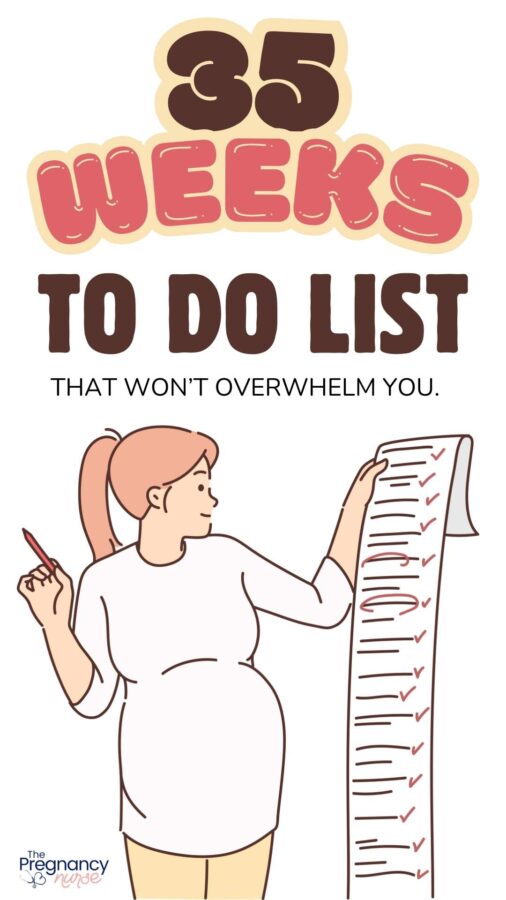
Fun fact: The first lesson in here talks about 3rd trimester testing, what it’s for, how to understand how the results can affect your pregnancy moving forward. This can make a HUGE difference in your labor to understand.
Learn About Problem Signs
There are some pretty specific problem signs that you’re going to want to keep an eye out for.
Honestly, at this point in pregnancy everything seems like a problem sign — including the fact that putting your own shoes on is a pretty big trial — but there are some really specific ones we want you to watch for — so make sure to have that talk with your provider. You’ll also want to find out when to head to the hospital for labor too!
I just had a friend who had a great pregnancy until she started having itchy palms and found out she had cholestasis.
I have another friend with a great pregnancy until suddenly her blood pressure spiked. In both of those cases they decided an induction was in their best interest — which was completely unexpected!
They were so glad they took this class to really be prepared for how to find out what they were testing for, and how to make the choice to be induced (because it is always your choice!).
I think when we think about birth classes we always think about breathing — but there is a lot more to think about in a birth class. This one includes testing, labor signs interventions, PLUS breathing!
Preterm Labor Signs
You’re right at a spot (or, if you’re a few weeks before this — I’m especially talking to you) that we still really don’t want baby to come for a couple more weeks.
Learning the signs of preterm labor can help you get into the hospital fast so they can stop it (with medications).
Grab my labor signs checklist here:
Get Hospital Supplies
Now is the time to grab anything you want at the hospital.
Now, the hospital will provide you with what you need should you come in with nothing — we do that all the time. BUT, I will say that our toiletries suck.
If you can avoid using them, I say do so. They are gross.
I recommend everyone bring:
- Something for chapped lips (Vaseline, etc.)
- Toothbrush / toothpaste
- Lotion (the hospital is VERY drying to lips & skin)
- A hair tie
- If you think you’ll want to wash your hair I’d bring those products too.
- Any other toiletries you think you’ll want (some women do make up, some do not — either ways is fine!)
Then, you’ll obviously need to bring whatever else you need.
The hospital will provide linens/towels — so you don’t have to worry about that.
Here are a few more posts that might help you know more of what you’ll want at the hospital:
- What to Wear For a Cesarean Section
- Do You Wear a Bra During Labor?
- Your Guide on What to Wear in Labor & Delivery and Your Hospital Stay
- The Best Postpartum Pajamas
Pack Hospital Bag
First off — I have a hospital bag packing list right here if you want just that (it’s also a bonus in that third trimester checklist I linked at the top though):
I am a big fan of not OVER-packing for the hospital, mostly because it gives you less to put away when you get home (and less to sort through for what you REALLY need). I do recommend 4 different bags though:
- A Labor Bag
- After the baby bag
- What to pack in the diaper bag for the hospital for the new baby
- What to pack in hospital bag for dad
- Bonus for those with a scheduled c-section
But I do recommend that your partner know where these three items are (so they can easily get them when you need them, vs you giving them the death stare when they can’t find them):
- Chapstick/Vaseline – something for dry lips.
- Hair Tie (unless you have a pixie cut — if your hair can get in your face you’ll want something to keep it out of it, especially during pushing)
- Phone charger or external battery
If it was me, I’d have those three things in a special pocket in the bag that I would show them where they are in advance.
Honestly, at 35 weeks I never had my bag packed — I felt like it was bad ju-ju since I figured I’d go late (I was right). However, I think it’s smart to have the necessities in a small case and then you can add to it as you get closer to your due date.
I have a whole post on when to pack your hospital bag.
Get Postpartum Supplies
In addition to labor supplies, you’ll also want to grab your postpartum stuff. This means pads, tucks, Ibuprofen. I have a whole list here (that’s also included in that third trimester checklist I linked to at the top):
Figure Out Your Birth & Postpartum Plan
Now is the time to start solidifying your birth plan. Mostly you’re thinking about what you’d like in a perfect world (I never recommend getting your heart set on something specific). I have a whole birth plan series I can send you right here:
I actually also recommend making a postpartum plan as well. This is going to go over where you plan for baby to sleep, how you’ll feed them, who will get up at night, who can help — and more. Just like a wedding we spend far too much time planning for the “big day” (aka, labor) and not enough time thinking about what life will be as a married couple (or after you have a baby in this case):
Remember that class I shared up above? I absolutely LOVE the couples questions, because it helps you start making that postpartum plan from the beginning. I love how it sparks conversations that you really need to have (but may not even know you need to have). Huge fan of them!
Choose a Pediatrician
This is one a lot of people are sort of surprised they need a baby doctor (your OBGYN will not be seeing the baby — they honestly don’t do babies at all).
You’ll want to look for a pediatrician for your baby. I recommend:
- Asking friends who live close to you who they recommend
- Check your insurance to see who they cover
- Find someone close — you go to the pediatrician often!
This is one of those little things a lot of people miss, so I’m glad you’re here in this post with me.
Once you pick them, note their name, their practice name, phone number and maybe address so you can tell the hospital when you’re admitted.
Pro Tip: Pediatricians used to come to the hospital to see babies they’d follow later on, but anymore most newborns are followed in the hospital by a hospitalist (a doctor who just does rounds at the hospital) and then you take them to your own pediatrician once you’re home — so you don’t have to worry as much if your pediatrician comes to your hospital (although it would be awesome if they did).
Take a Breastfeeding Class
I think a breastfeeding class (a very basic one) can be REALLY helpful.
For the majority of people breastfeeding doesn’t come naturally, which is a shame since it’s all very natural. I will say that it did NOT come naturally for me, and I’d helped moms breastfeed.
Taking a class that:
- Teaches you what to do in the first few days as far as getting baby to feed
- Cues baby will have for when they’re hungry
- What a good latch looks/sounds like (or doesn’t sound like)
- Problem signs that it is not working and you need help.
You don’t need a giant class that troubleshoots a ton or talks about pumping — just some basics. Don’t get overwhelmed.
The good news? That class actually has a breastfeeding class written by an IBCLC bundled in. Plus, she also does postpartum consults and so you’re tied into someone who can help you even when you go home!
If you’re JUST in the market for a breastfeeding class, you can find them at The Breastfeeding Mama.
Figure Out Missing Baby Needs
Ok, this is pretty far down the list — mainly because this is the thing that most people focus on.
I think it’s smart to make a final list of what you have LEFT to purchase at this point.
I have a whole post on baby necessities that you might find helpful.
Want to know more baby info — check out these posts:
- Best Baby Names 2025
- 3 Medications for Baby to Have On Hand
- Help! My Baby Won’t Sleep — my epiphany!
- What to DO With Your Baby?
- 5 Things That Are Different on Your Second+ Baby
Get Your Cervix Ready
These might not be for everyone, and I 100% recommend talking with your provider before starting them (especially primrose oil) — but they have been shown to possibly make labor easier if you start around now.
I see FAR too many people require an early induction (first, understand your testing, to understand if it’s really required) and then end up with C-section because their cervix just wasn’t even close prepared for labor. I just think we can do a few things to maybe prep it after reading the studies.
I have a whole post on how to prepare your cervix before labor. It includes links to my posts about dates and my post on primrose oil (both include the studies).
Learn The Postpartum Warning Signs
I think that in the last month of pregnancy it is an AWESOME time to go over the postpartum warning signs.
Once baby is born you may be CONSUMED by all there is to learn and know about your new baby as you get to know them — so being prepared on what to watch for YOU (including your support people) is so smart.
I actually have a whole class that is included in here where I run through them with you giving examples and what exactly I’ve seen in my experience.
BUT if that feels like too much, I also have a quick (and free) presentation here.
Both of those include a printable you can put on your fridge with the signs that either should send you directly to the hospital or to call your provider — it’s super clear and concise, I love it!
Don’t Forget Self Care
Alright, I worry that this post may have made it worse — but I am also here to say that taking care of yourself is VERY important in all of this.
Think of who can help you, get your partner involved. Make sure that you’re taking care of yourself!
I have a whole post on self care during pregnancy (and postpartum) — as it sometimes looks a bit different than it did before.
I worry this list feels very overwhelming.
Honestly, that’s how preparation is — sometimes it might require a LOT of work, but if someone just bundles it all together — helps you understand third trimester testing, preparing your cervix, preterm labor signs and more — that’s the beauty of a good birth class.
You know the crazy thing about online courses’ — is that their information can often be found on the internet. Which is handy, right? BUT, what you’re actually paying for is having it all in one place, where you’re not getting repeated info but also it’s all from one quality source so you know it’s all correct.
That’s why I recommend The Online Prenatal Class for Couples. You won’t regret it! In fact, I’m so passionate about you getting it done — if you start right now, use coupon code 35WEEKS to save 10%!
So, did I miss anything? Tell me in the comments! I hope you found this post helpful!


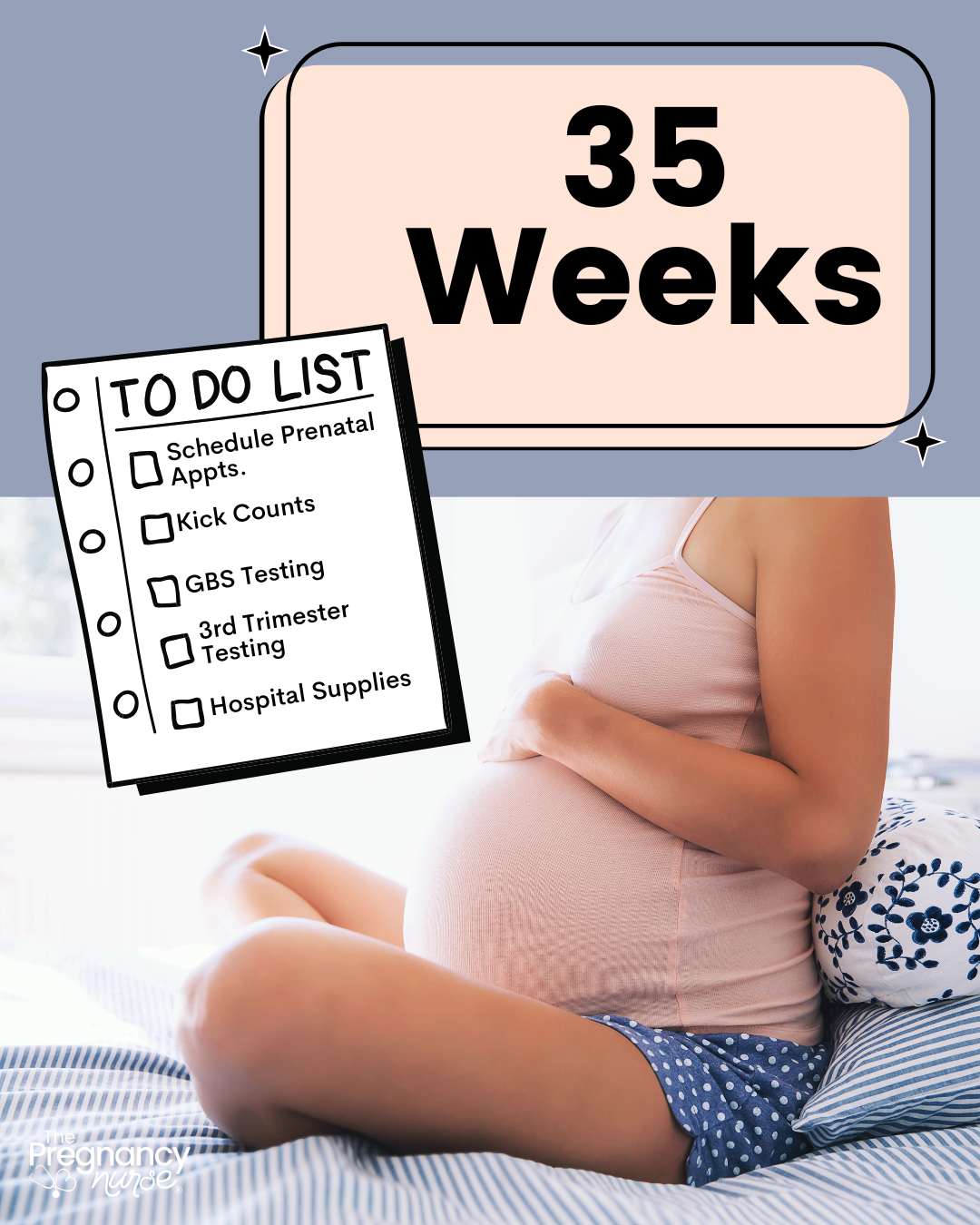
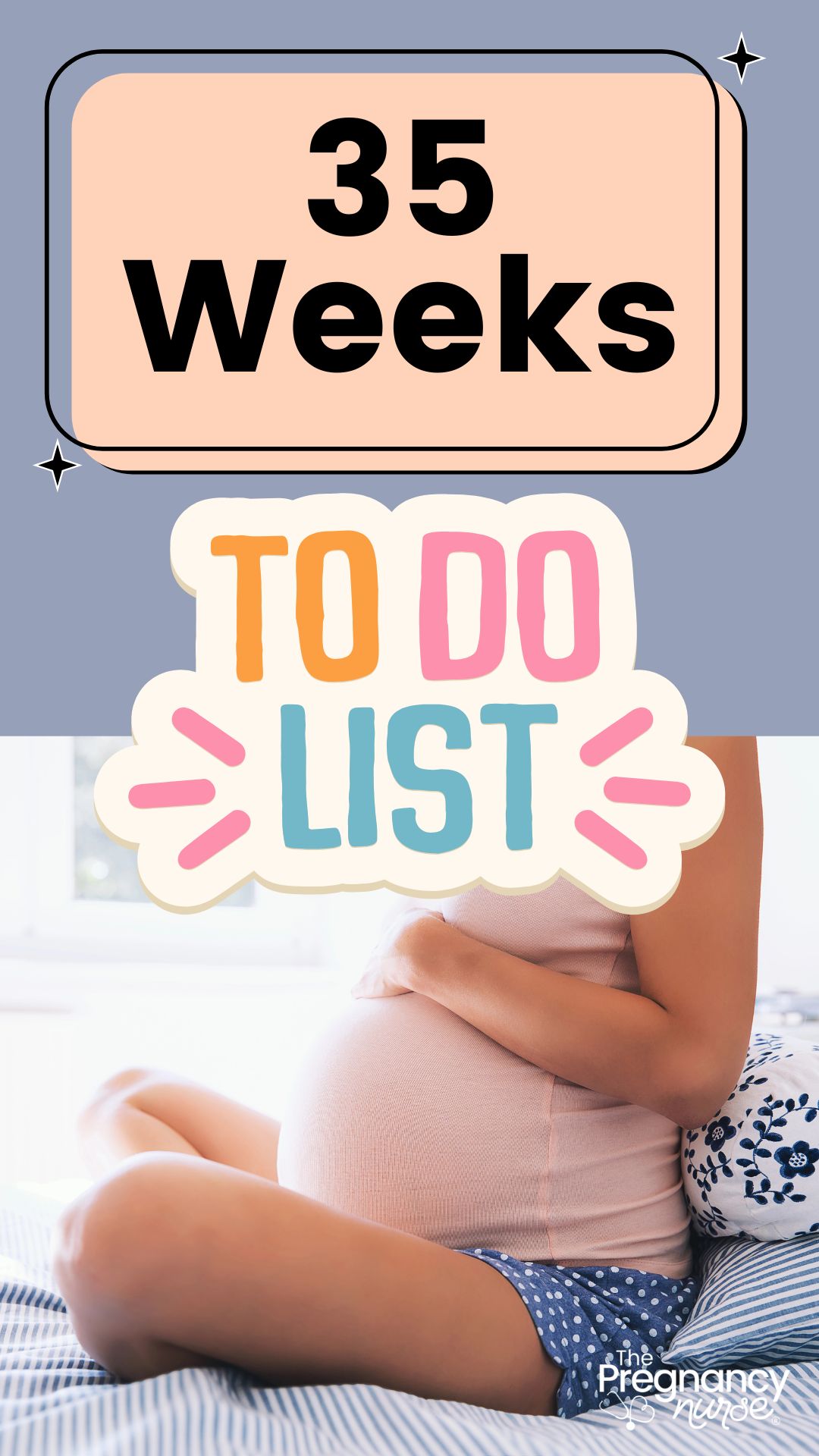

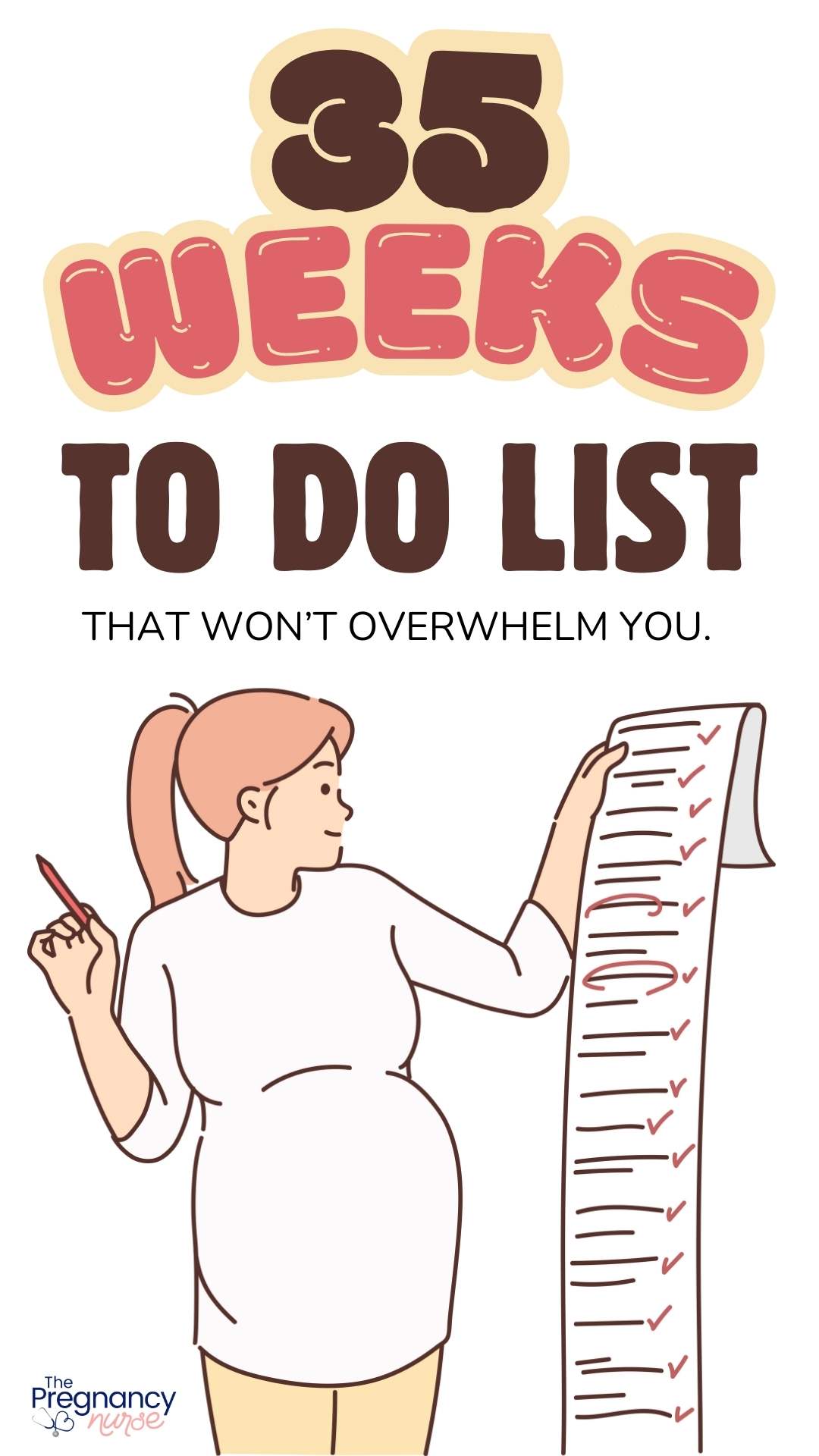





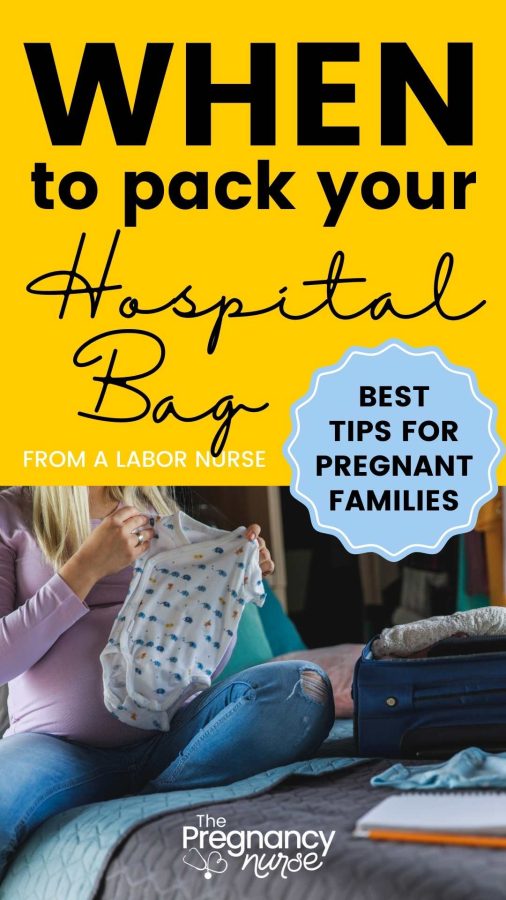




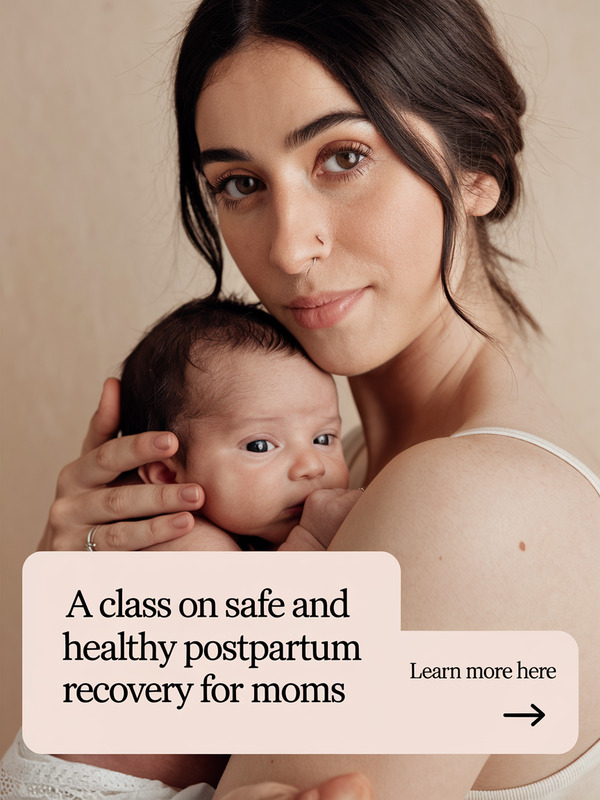
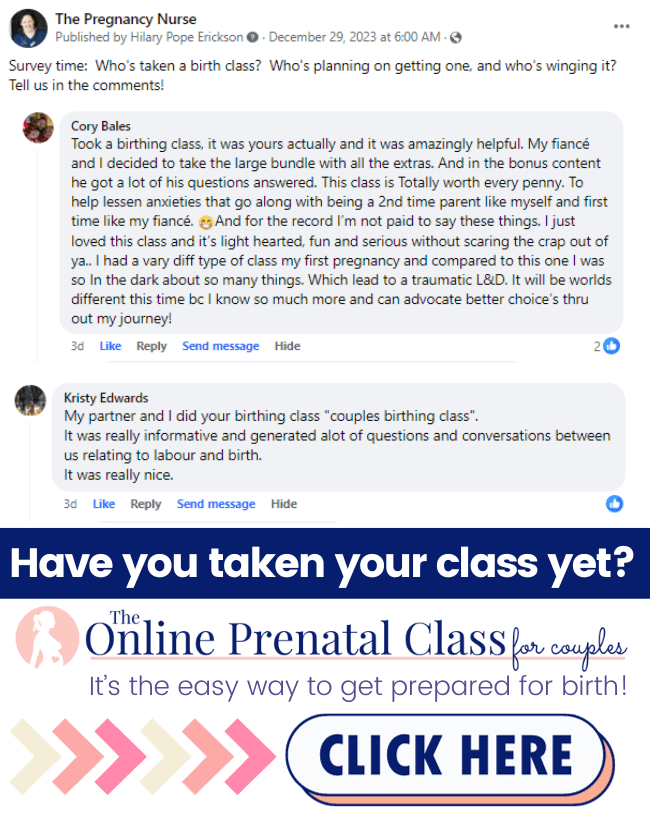

 Does Evening Primrose Oil Induce Labor?
Does Evening Primrose Oil Induce Labor?
